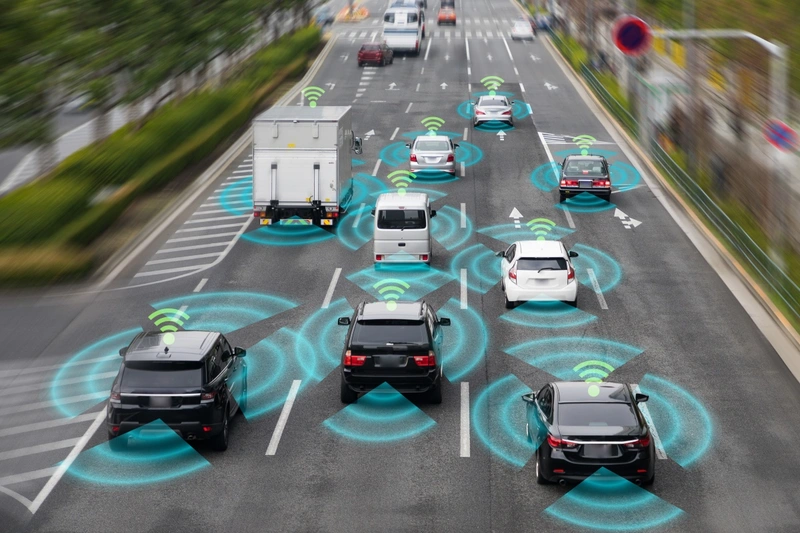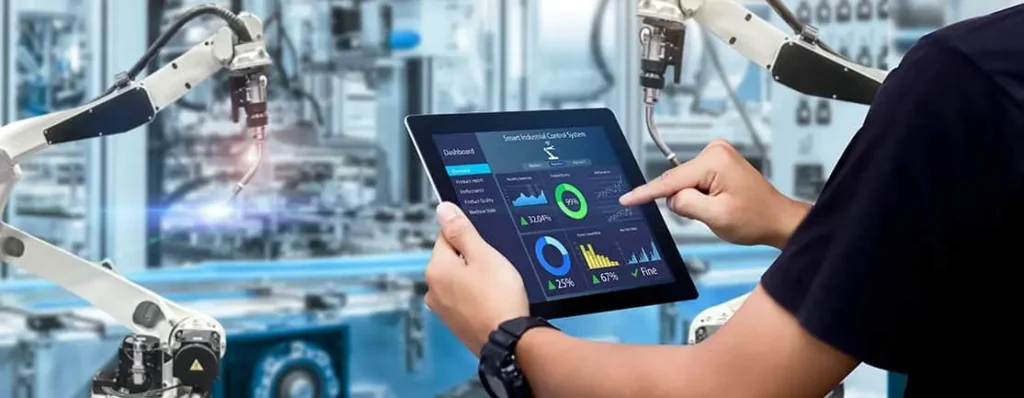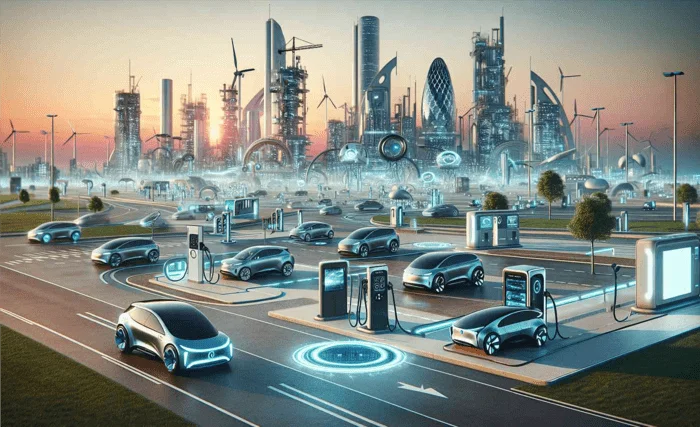Quick Links
The automotive sector is poised for significant transformation, driven by rapidly evolving technology, shifting customer preferences, and growing environmental concerns. A number of significant changes are expected to impact vehicle design in the future, affecting everything from appearance to functionality to construction methods and prospects. This blog article will examine upcoming trends in automotive design and how they will affect how cars will seem in the future.
Electrification and Sustainable Materials
The Transformation – Moving towards Electric Vehicles (EV)
The electrification of vehicles is one of the most significant advancements in automotive design. Automakers are investing more in electric vehicles as public awareness of climate change rises and emissions regulations get stricter. EVs have several advantages, including lower noise levels, lower running costs, and lower greenhouse gas emissions. However, because cutting-edge battery systems, effective electric drivetrains, and creative cooling solutions must be combined, the design of an EV differs greatly from that of a traditional internal combustion engine car.
Autonomous Vehicle Technology
Advancements in Self-Driving Systems
The field of autonomous driving technology is undergoing significant advancement, with numerous corporations and research organisations actively contributing to its development. Advanced sensor systems linked to complex algorithms and artificial intelligence (AI) technologies will be included into automobile design in the future, enabling navigation and decision-making capabilities for moving vehicles. As a result, a variety of sensors, including LIDAR, radar, and cameras, will be installed on autonomous cars. The information gathered from these sensors will provide a comprehensive picture of the environment.
Vehicle Interior Redesign for Autonomy
The emergence of autonomous vehicles signals the start of a new phase in the long history of conventional automotive interior design. The design of these vehicles, which will replace drivers, will prioritise the comfort and entertainment of the occupants over the driver. Advanced entertainment systems, integrated workstations, and movable seating arrangements are a few examples of this. The idea of “mobility as a service” will influence flexible and user-friendly design when creating shared autonomous vehicles.
Connected Vehicles and Smart Technology
Vehicle-to-Everything
Future car designs will be heavily influenced by connected technology. The ability of automobiles to communicate with infrastructure and other cars will grow. Vehicle-to-everything (V2X) communication systems have the potential to significantly increase road safety by enabling cars to communicate with traffic lights, road signs, and other vehicles travelling in the same direction. Adaptive cruise control, automated parking assistance, and dynamic traffic updates are all made possible by next-generation networking.

Smart Technology Integration
Vehicle design is starting to include smart technology, with AI and connectivity enhancing the systems’ intelligence and usability. They have fully functional, next-generation entertainment systems with gesture detection, wireless integration, smart, intuitive interface, and vocal control. As a result, it’s conceivable that future cars will have even more advanced, AI-powered predictive maintenance notifications and customised driving experiences.
Innovative Vehicle Aesthetics
Aerodynamic and Functional Designs
The endeavours to enhance the fuel efficiency and performance of automobiles are increasingly emblematic of radical designs in automotive systems. Aerodynamic optimisation remains a top goal, and it will be clear that more money has to be spent investigating novel forms and materials to lower drag. Active aerodynamics techniques will become the norm, leading to more efficient and streamlined designs. These techniques allow a vehicle’s components to alter in real-time to optimise airflow.
Customization and Personalization
Customers are searching for cars that will satisfy their sophisticated tastes and preferences as a result. In the future, automakers will be able to customise their vehicles to fit the preferences of individual customers. Most likely a custom exterior colour, a custom interior finish, or even modular elements that are simple to modify or replace. As 3D printing technology advances, the automotive sector will be able to offer manufacturers highly customised and intricate design elements.
Advanced Manufacturing Techniques
3D Printing / Additive Manufacturing
Vehicle manufacture is changing as a result of advanced manufacturing techniques. The development and manufacturing of automobiles continue to benefit greatly from the contributions made by additive manufacturing, or 3D printing. This technique makes it possible to create novel materials, intricate geometries, and parts quickly through prototyping. In an effort to cut costs and production times, manufacturers are also attempting to employ it for the creation of lightweight auto parts, customised projects, and even entire automobile structures.

Advanced Manufacturing Techniques
Flexible and Automated Production
Automated and flexible production techniques are used more often as Industry 4.0 progresses. Production efficiency and flexibilities are improved when smart factories are implemented with robotics, artificial intelligence, and Internet of Things technology. The systems being automated can respond to changes within production need, optimize the flow, and maintain the standards of quality. Manufacturers can now test and improve designs in virtual environments before manufacturing them physically thanks to the interlinking of digital twins using simulation technology.
Improved Safety Features
Advanced Driver-Assistance Systems (ADAS)
Without a question, safety has always been taken into account while developing automobiles. In this sense, the second generation of cars will have more advanced ADAS functions. The car’s safety and driver assistance will be improved by the combination of these sensors, cameras, and AI systems. Improved iterations of adaptive cruise control, lane-keeping assistance, and automated emergency braking will be incorporated into production cars to provide greater safety and accident avoidance.
Predictive Safety Technology
Automotive safety in the future will also entail predictive technology that anticipate and eliminate potential threats before they arise. For instance, automobiles can use AI to process data from several cameras and sensors in order to prevent collisions. This might consist of adaptive responses to changing road surroundings, real-time danger identification, and predictive collision alerts.
Urban Mobility Solutions
Electric and Autonomous Urban Vehicles
Every expanding city’s previous need is satisfied by sustainable and effective transport options. Automated and electric city cars will contribute to overcoming these obstacles. Compact electric vehicles for city mobility, with shared driverless shuttles, will cut congestion and emissions and make metropolitan surroundings more accessible.
This suggests that greater integration between private and public transit networks will be necessary for urban mobility in the future. Automobiles designed to work well with self-drive buses and ride-sharing services related to public transportation would enable such efficiency in urban transportation. By providing the user with a more convenient and adaptable mode of transportation, an integrated system like this will lessen the total environmental effect of transportation.
Biometric and User Experience Innovations
Biometric Authentication
The application of biometric technologies in automobile design is a constant goal for improving convenience and security in the future. Automobiles will employ facial recognition, fingerprint recognition, and iris scanning technologies to provide individualised access, allowing only authorised people to operate a vehicle. Additionally, these biometric systems will be included so that the user can customise the vehicle’s settings to suit their tastes.

Enhanced User Experience
Future developments in car design will bring about more intuitive and immersive user experiences. These will include augmented reality displays and capabilities like voice control and gesture recognition. For example, augmented reality head-up displays reflect certain crucial information onto the windscreen, providing real-time data without drawing drivers’ attention away from the road.
Driving the Future of Automotive Design
The integration of technology, sustainability, and innovation is key to the future of vehicle design. The most significant trends that will mould today’s cars into ever-more-intelligent, user-centred, and efficient vehicles are covered in more detail below. The automotive industry is poised for a revolution that will alter our perception of mobility, encompassing electrification, autonomous driving, sophisticated production processes, and enhanced safety measures.
These advancements are changing the way that cars will be made, constructed, and used in daily life as these two trends continue to progress. From the perspective of both consumers and creators, embracing these shifts in their entirety will be vital to our progress towards a connected, sustainable, and technologically advanced future.
Paying attention to these trends will make everything make more sense and sound absolutely fascinating, whether you’re a tech buff, an enthusiast for cars, or someone who just loves the futuristic transportation scene. These are the cool innovations that come with this automotive renaissance. The future is full with opportunities, and the advancements that lie ahead will make driving more efficient, fun, and sustainable than it has ever been.
For more content and for online earning blogs visit autoearn.online or visit our Fcaebook page.



